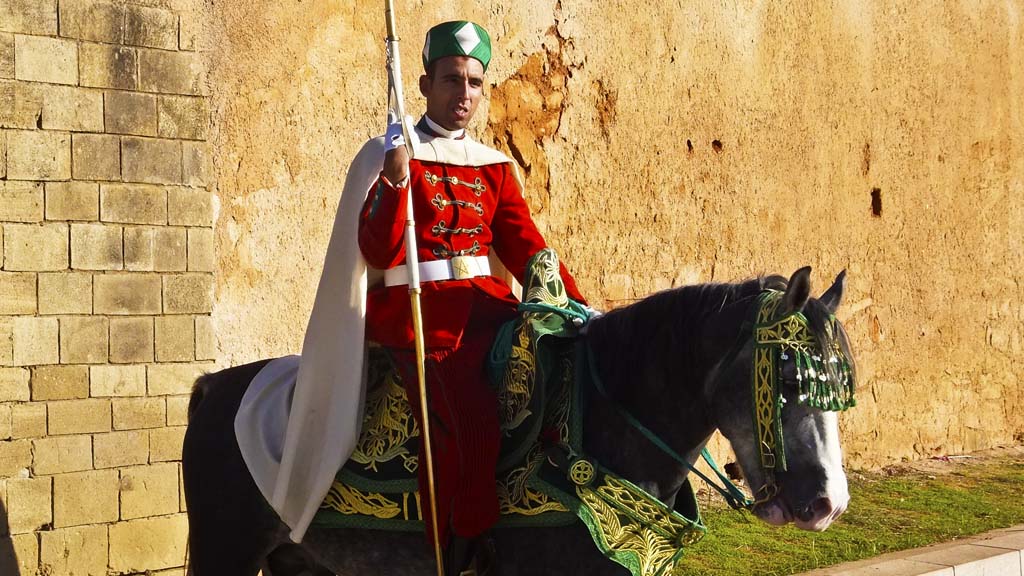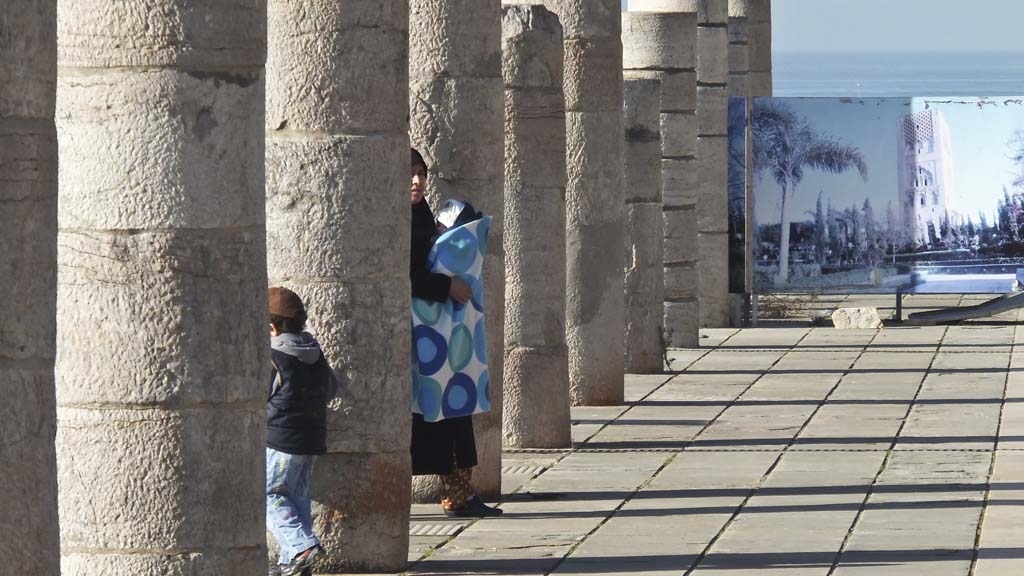
Watching the gallant Moroccan soldiers seated on horseback in full uniform under the sweltering sun at the gates Rabat made me thank the fates for the career I’ve chosen.
The Moroccan Army guards at the Mausoleum of Mohammed V must have among the world’s most physically and mentally challenging jobs.
The young soldiers have to sit at attention on horseback in the broiling sun with lances held high during six-hour tours of duty, while hordes of tourists snap endless shots with their iPhones of their friends trying to do something rude to distract the guards’ attention.

The Mausoleum was a highlight of what was a very remarkable day on a shore excursion from the Crystal Serenity. But this was the end of a long day, so let’s rewind to the beginning– leaving Crystal Serenity at the dock in Casablanca for a day-long excursion to ancient Rabat.
Casablanca for all its romantic appeal of the Hollywood film where Rick and Ilsa remembered the past in Paris and did stuff that drove the Reich crazy resembles little in Casablanca today, where construction cranes top high-rise condos.
The historic royal city of Rabat only 60 miles away is much more appealing, but it takes an hourand a half to get there because the first half hour is on gridlocked roads leading out of Casablanca’s port and industrial zones.
It was a treat to arrive in a city with more human-scaled buildings, many of them screened from the road by stone walls covered with bright bouganveilla. Our first stop was the grand-sounding Royal Palace. So when we turned through a gateway ithrough what looked like the city’s original walls, I was expecting an equally ancient and intriguing looking palace.

Instead, the bus stopped in a vast but empty asphalt parking lot near what looked for all the world like a modern drive-in bank. Across acres of pavement there was what looked for all the world like a shopping mall that would look at home in a suburb of Los Angeles.
We were in the right place all right, but the exterior of the current royal palace was recently built and the parts of the palace that are over 500 years old are off limits to tourists. We have to be content to snap photos of guards dressed in an array of colorful uniforms from a barrier a long distance from the palace itself.

I did find some interesting cannons decorating the grounds, including a stubby bronze gun with an inscription that read 1183. Either it was the maker’s mark or someone’s 800 year old graffiti.

Next we visited a walled city that the Chella Necropolis that is a true city of the dead. Built by the sultans, it marks the site of the ruins of the original Roman city on this coast, Sala Colonia. It was transformed into a cemetery in the fourteenth century but its grand walls and gates have been maintained as though it was still a living city. Freaky.
Time for lunch. And that means the big meal of the day in this part of the world.

We sat at tables of 10 and huge platters of couscous with a profusion of vegetables and braised beef were laid out in the middle family style. It was all delicious and tender.
Then we drive along the sea shore and learn that beachfront property along this coast is apparently not highly prized. In fact it`s the area where some of the poorest families live.
The afternoon took us to the Mausoleum, known particularly for its inner sanctum where the bodies of the late King Mohammed V and his two sons, the former King Hassan II and Prince Abdallah are buried. A vigil is kept by readers who maintain a continuous recitation of the Koran. when they reach the end they start over again.

The mausoleum is on the site of a much older mosque that was destroyed in an earthquake 250 years ago. The former interior columns of the mosque still stand in rows on the site that`s enclosed by a tall stone wall. A tower in the corner of the wall is part of a minaret build in the twelfth century but was never completed.
It all suggests the grand scale of the mosque that once accommodated over 20,000 worshippers at a time, but today has become a playground for local children.

As a final stop we visit the Kasbah of the Udayas, a walled structure that was the city`s market and fortress in ancient times but today has been turned into the luxury housing of the wealthy and a popular place to book a bed and breakfast room.

You could wander here for hours through the winding laneways and head out to the coast, but we have a long drive back to Casablanca.
Our day`s outing made me anxious to come back at some point and do more exploring of the city with its royal roots.





